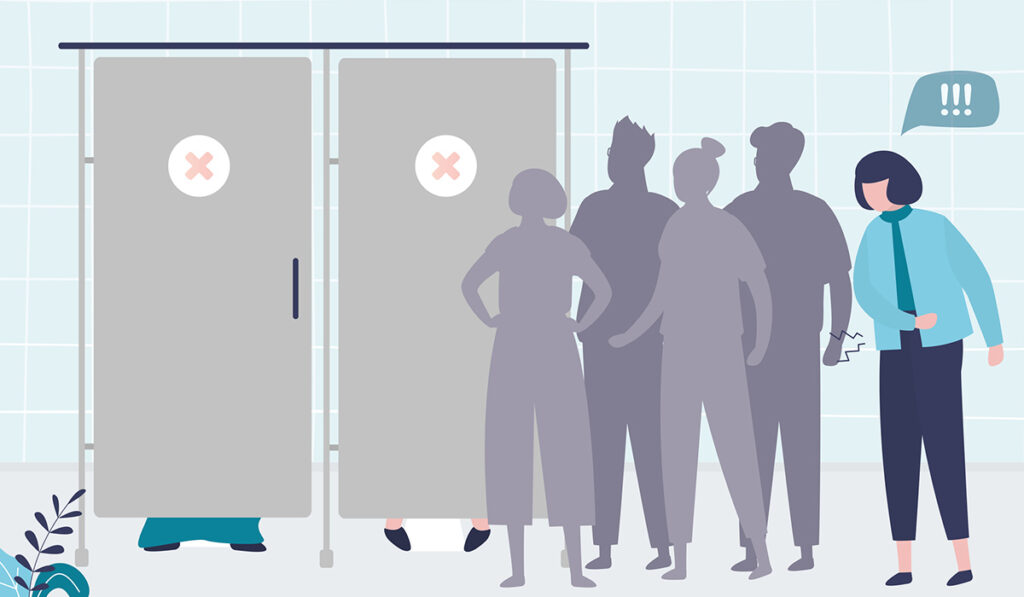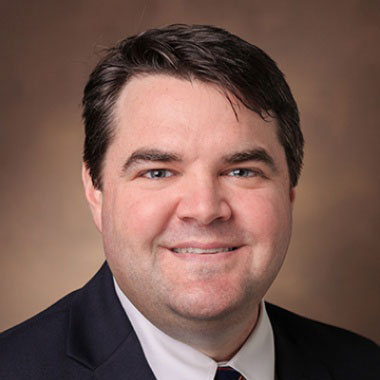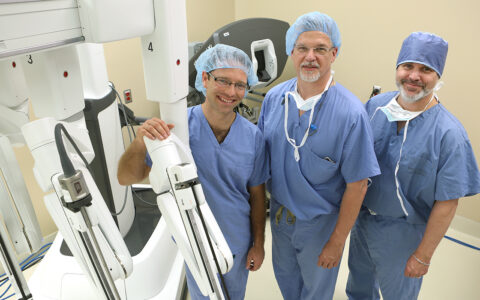People with diverse unmet needs – including a lack of nutritious food, safe housing, and regular employment – are at greater risk for overactive bladder syndrome, according to a recent article in the Journal of Urology.
The study also identified higher risk among people who have difficulty in obtaining regular access to toilets, expanding on research published in 2021 showing that urban-dwelling, female patients with a range of unmet social needs were at increased risk for overactive bladder.
“We wanted to more broadly investigate these kinds of associations among both men and women from a wider range of communities,” said Elisabeth Sebesta, M.D., an assistant professor of urology at Vanderbilt University Medical Center. “We looked into a greater variety of unmet needs, including access to toilets and sufficient plumbing.”
Social determinant deficits have proven to be associated with increased risk of many major illnesses, including diabetes, but little such research has been done in urology, Sebesta said.
Practical Perspectives
“We assessed the impact of a person not having easy access to toilets at home, which was not measured in earlier work,” Sebesta said.
“Including these kinds of questions is novel. People don’t think about it, but for people with certain urinary problems, an insufficient number of toilets in the home for the number of people who live there or the lack of any indoor toilet represent important unmet needs,” said W. Stuart Reynolds, M.D., M.P.H., an associate professor of urology at Vanderbilt.
Reynolds explained that more than two million people living in the United States still live without indoor plumbing.
“People in America are still using outhouses,” he added.
Volunteers Recruited Online
Through ResearchMatch, a non-profit program funded by the National Institutes of Health, the Vanderbilt researchers recruited 3,617 participants ages 18 years or older to complete an anonymous online questionnaire on bladder symptoms and lifestyle factors. Nearly 40 percent of them proved to have overactive bladder.
The condition, Sebesta says, affects one in six adults in the U.S. with symptoms that include difficult-to-control urges to urinate, sometimes followed by leakage, and frequent urination.
Unmet Needs Mattered
The unmet needs associated with overactive bladder included housing instability, food insecurity, worries about utilities, troubles with transportation, skipping medical appointments, having legal problems, stressful personal relationships, and lack of strong social support.
“Worrying about having a place to urinate at home was also associated with overactive bladder,” Sebesta said.
“It’s important for urologists to be aware of such issues, because they may be one of the few medical providers that a person sees. Patients may not even have a primary care provider,” Reynolds added.
Determinants Cut Both Ways
“There’s a common misconception that ‘social determinants’ relate to things that are negative,” Sebesta said. “They aren’t negative or positive, and everyone has them. You can’t have social determinants of health or not have them.”
The social determinants of privileged, well-insured people tend to reduce health risks rather than increasing them, Sebestas said, adding that members of these groups are seldom prone to stigma.
What Can Doctors Do?
Reynolds and other leaders in urology urge clinicians to widen their focus to include social determinants along with clinical factors, which could be transformational for the field.
“We need to understand these broader issues,” he said. “Our treatments may not be applicable to everyone with unmet needs. If someone relies on others to drive them to appointments, they may not be able to keep those appointments.”
Government policymakers are increasingly focused on matters of socioeconomic issues and health disparities, yet knowing how to address a patient’s socioeconomic status and related difficulties is a challenge, Sebesta acknowledged.
Researchers have suggested taking a history of patients with overactive bladder that includes social-needs questions. Once those needs are identified, doctors’ offices may be able to refer patients to community-based services, such as organizations that offer food assistance, mental health or employment services, or case-management.
Awareness Is Growing
Twentieth-century medical education and research focused heavily on the biological underpinnings of disease within individual bodies. No, contributions of socioeconomic factors that affect populations are emerging as worthy of investigation.
The term “social determinants” has skyrocketed in frequency of use in 21st century medical articles. A PubMed search for articles using the phrase found 89 articles in 2006, 271 in 2010, and 1,116 in 2015.
Future Directions
Subjects located through ResearchMatch are not necessarily the most at-risk sorts of people, Sebesta noted.
“We really need to ask these same questions in a population that is not answering email, a group of people who are more likely to have low incomes and low resources,” Reynolds said.
Sebesta is working on a follow-up study to consider the ways in which unmet social needs affect incontinence among woman living in rural areas served by Vanderbilt.






